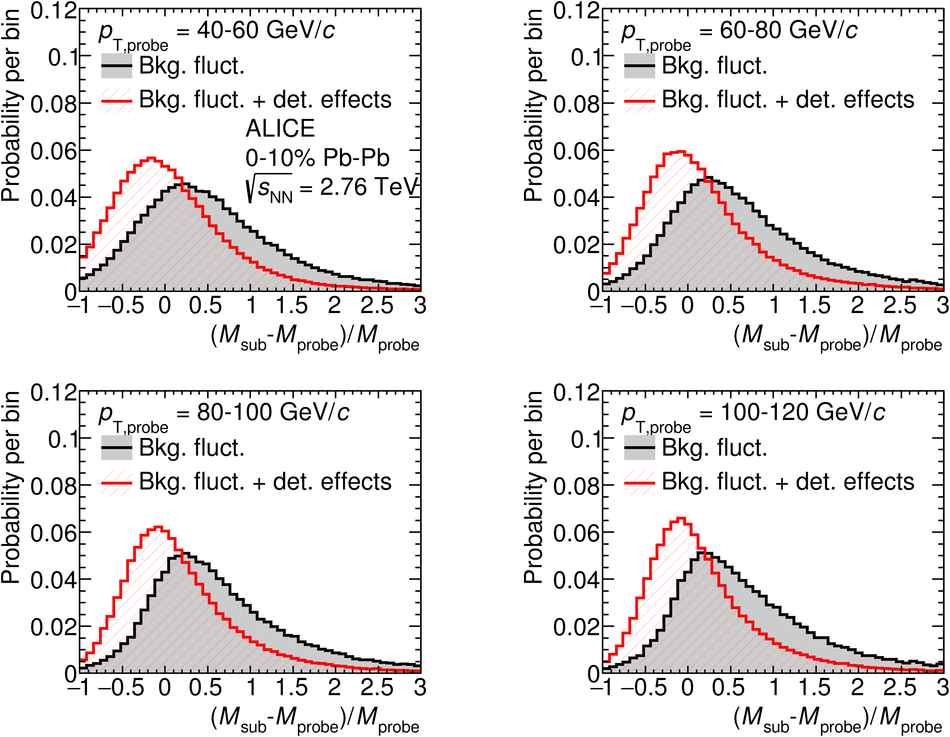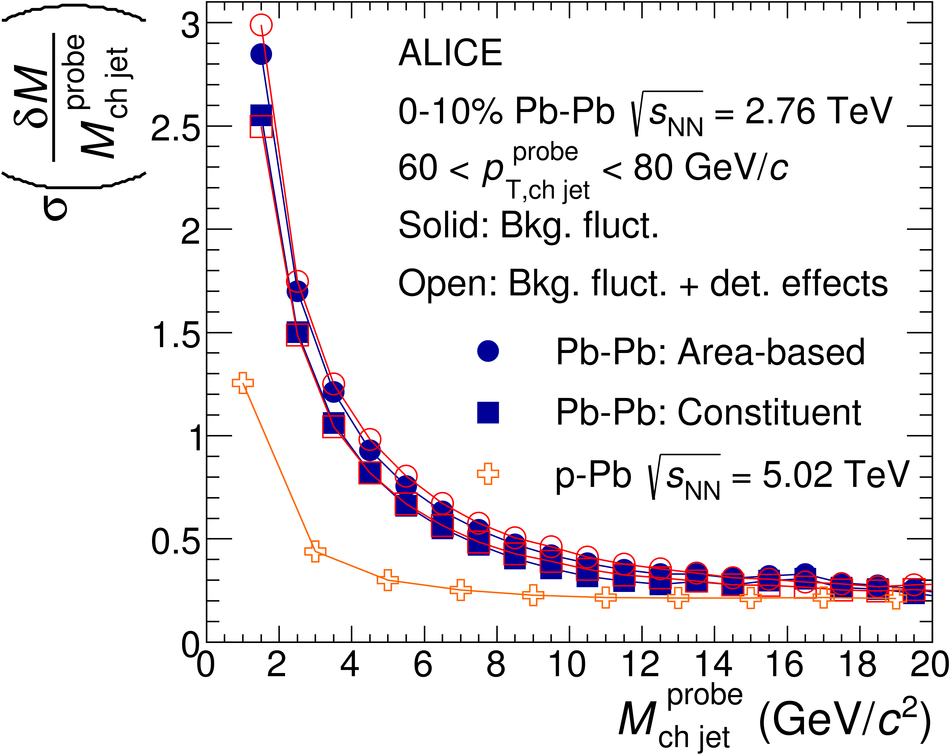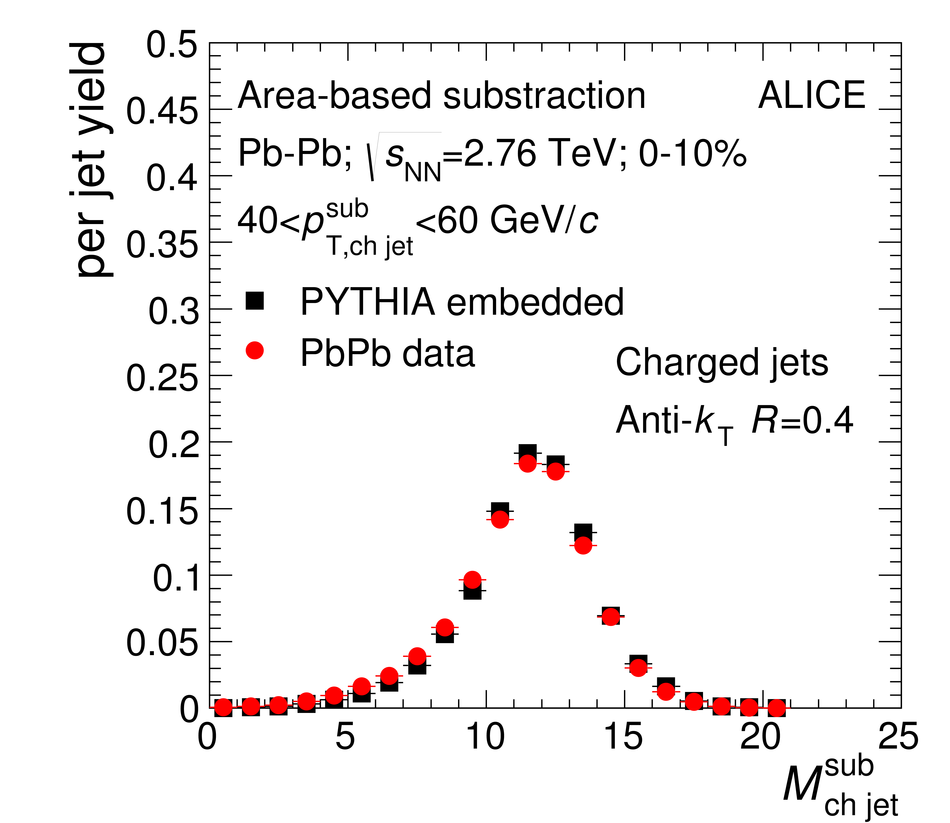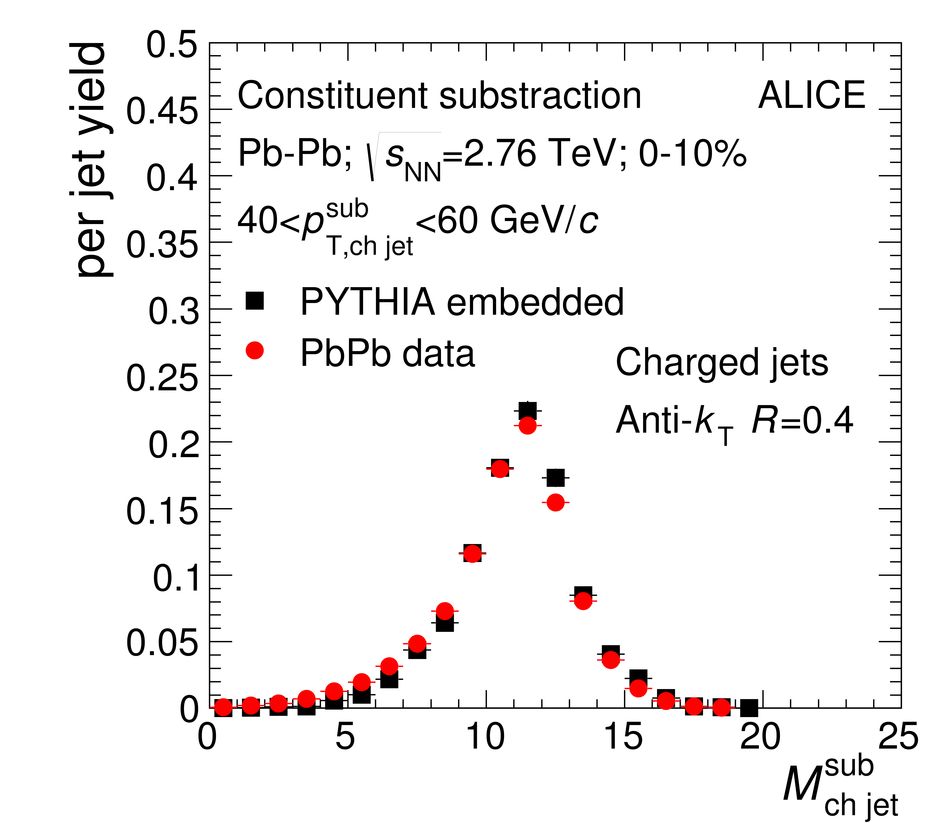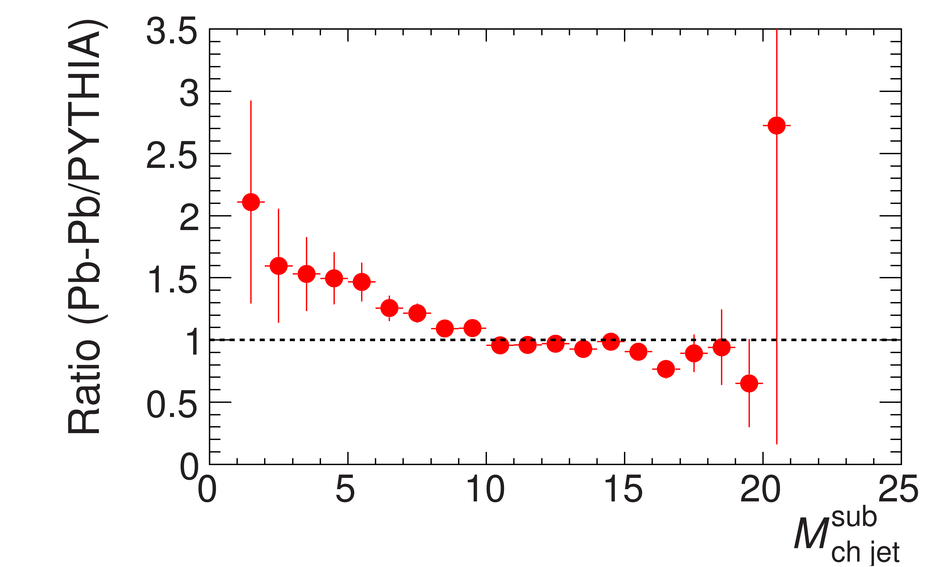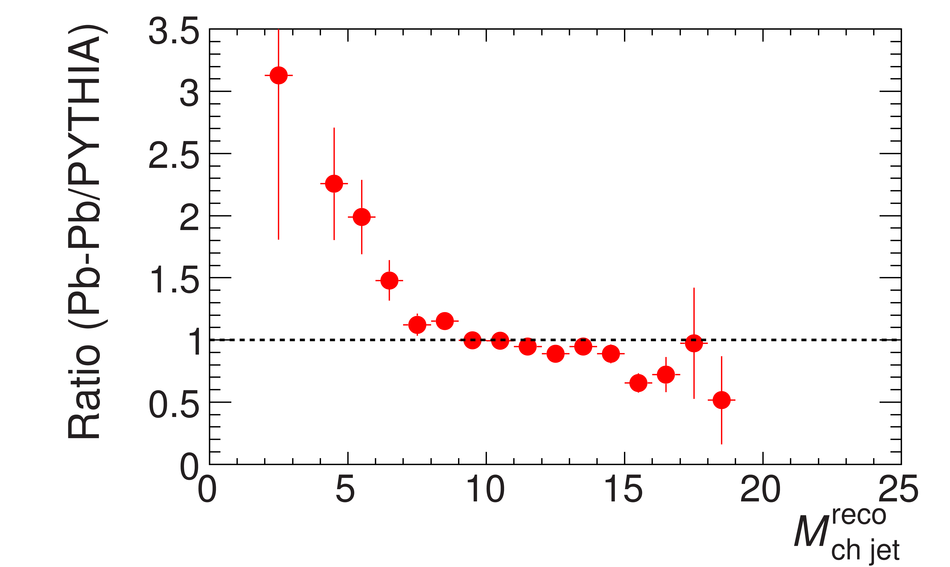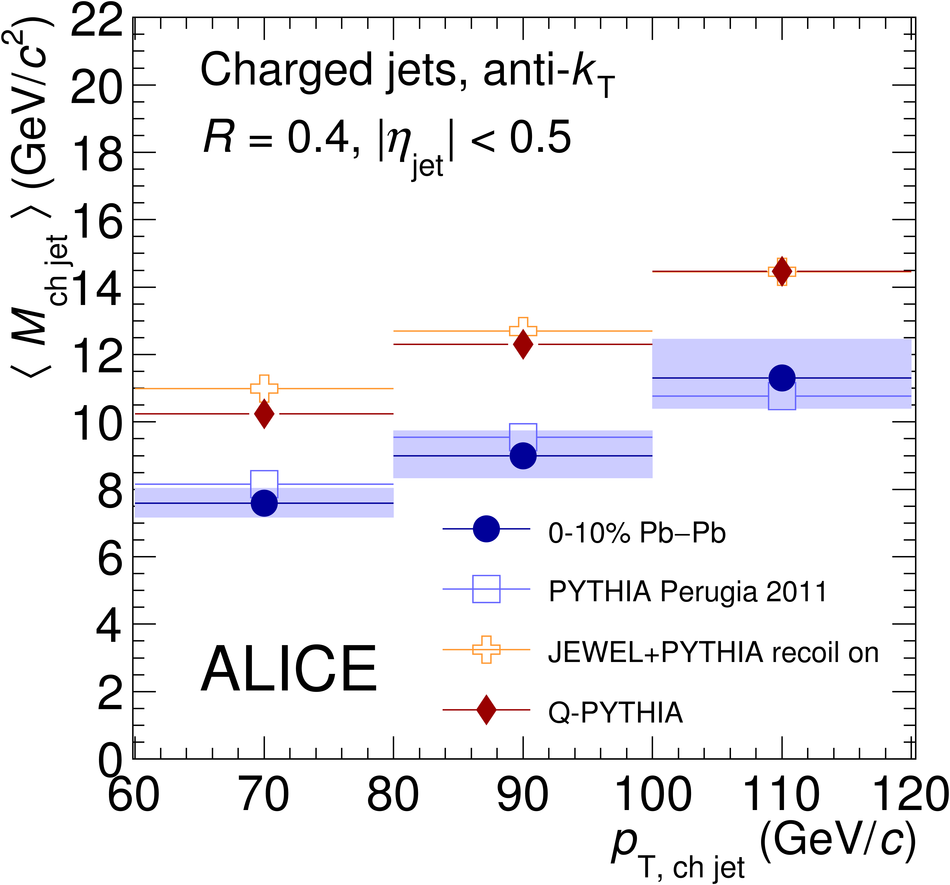This letter presents the first measurement of jet mass in Pb-Pb and p-Pb collisions at $\sqrt{s_{\rm NN}}$ = 2.76 TeV and $5.02$ TeV, respectively. Both the jet energy and the jet mass are expected to be sensitive to jet quenching in the hot Quantum Chromodynamics (QCD) matter created in nuclear collisions at collider energies. Jets are reconstructed from charged particles using the anti-$k_{\rm T}$ jet algorithm and resolution parameter $R = 0.4$. The jets are measured in pseudorapidity $|\eta_{\rm{jet}}|<~0.5$ and in three intervals of transverse momentum between 60 GeV/$c$ and 120 GeV/$c$. Background from the underlying Pb-Pb event is subtracted jet-by-jet using data-driven methods. Residual background fluctuations and detector effects are corrected via a two-dimensional unfolding procedure, where the jet $p_{\rm T}$ and the mass are simultaneously corrected to particle level. The measurement of the jet mass in central Pb-Pb collisions is compared to the jet mass as measured in p-Pb reference collisions, to vacuum event generators, and to models including jet quenching.
Phys. Lett. B 776 (2018) 249
HEP Data
e-Print: arXiv:1702.00804 | PDF | inSPIRE
CERN-EP-2017-016

